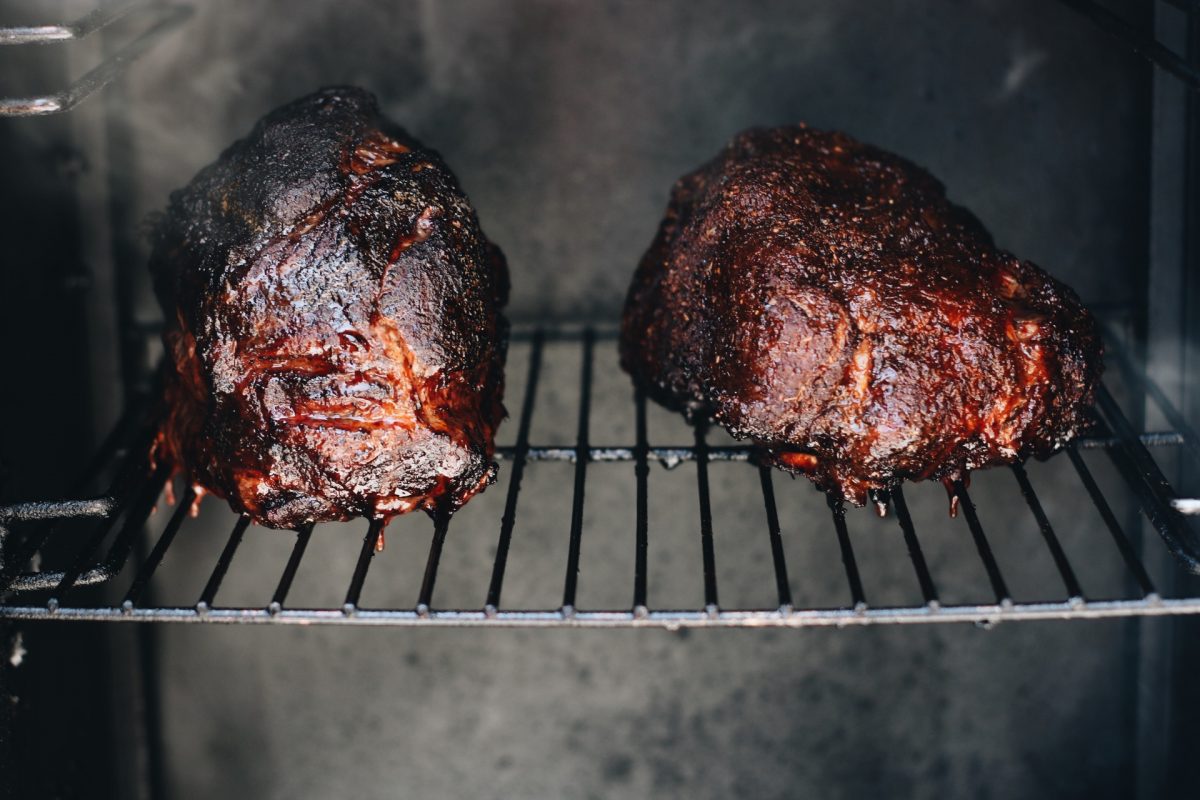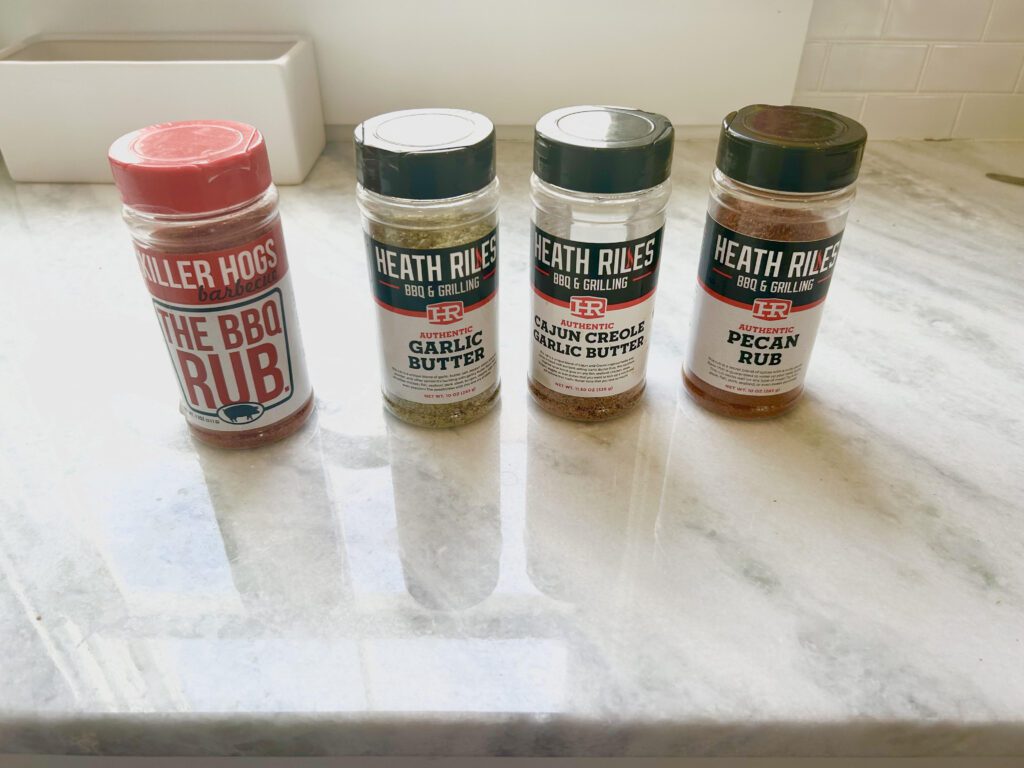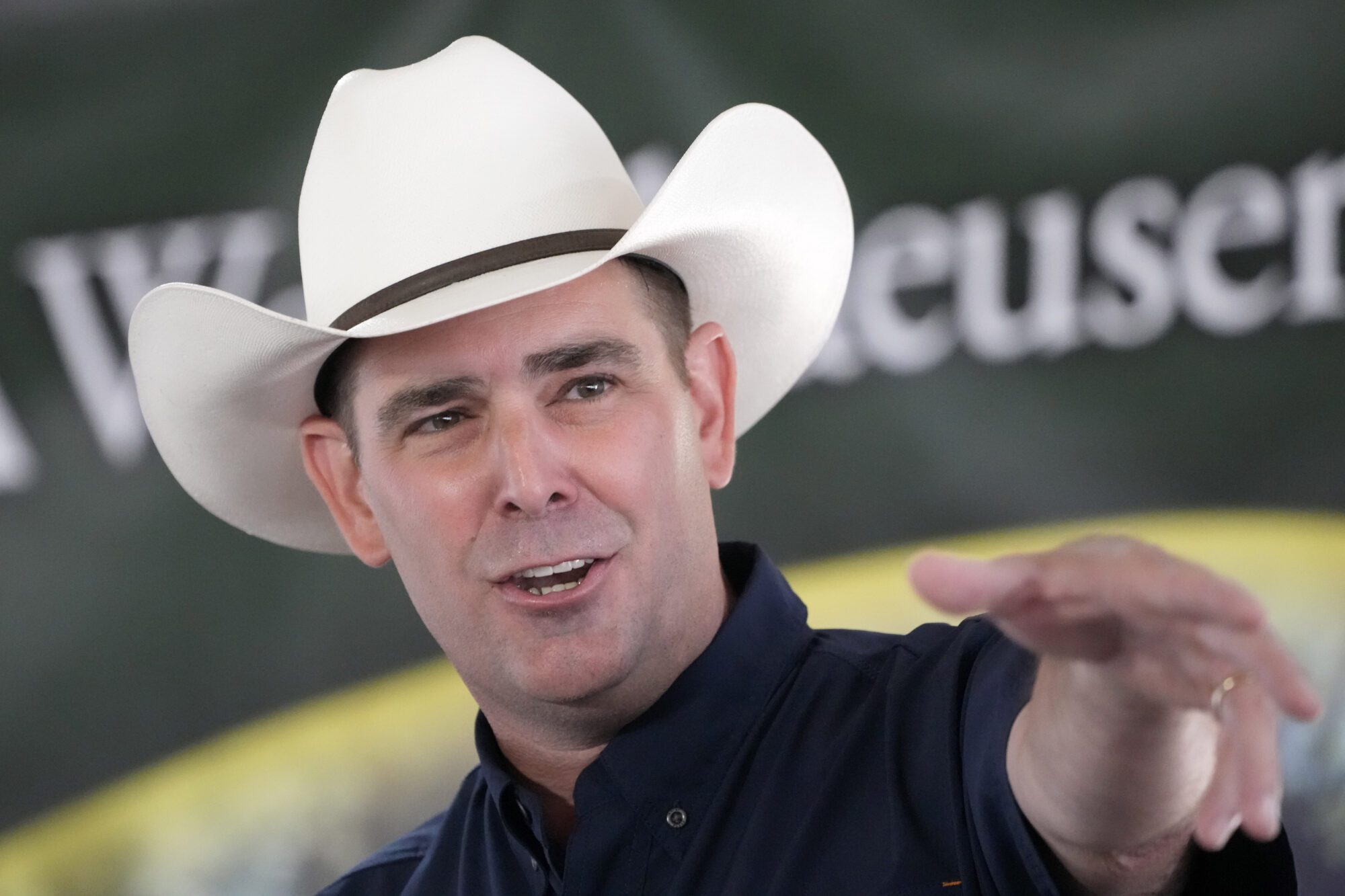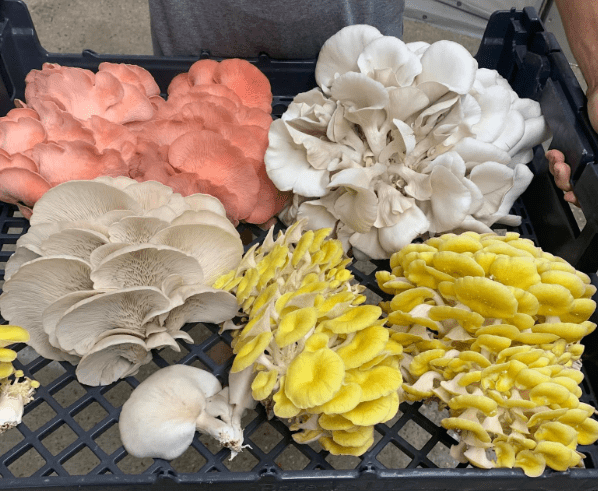
Dive in to learn how to smoke up a delectable pork butt, whip up your own Memphis-style barbecue sauce, & mix a smoked old fashion cocktail that will impress the in-laws.
Summer grilling (smoking) season is upon us. Travel west a couple of states and peppery brisket slow-smoked over post oak is king. But here in God’s country, pork rules the roost. If someone invites you to chow down on some barbecue in Mississippi, chances are its pulled pork, pork ribs, or some pork sausage.
There will be time to talk about ribs, sausage, and yes, even brisket. For now, though, let’s stick to tender and succulent pulled pork. There are different names for the piggie muscle that yields pulled pork. Some people refer to it as a pork butt. Others, a Boston butt. Only it’s not the butt at all (that’s the ham you eat on Easter).

The pork butt is actually the upper part of a pig’s front shoulder. The lower part of the shoulder is called a “picnic ham.” If you have smoked a picnic ham you know it’s a strange juxtaposition of pulled pork and the ham that comes on the hind quarters.
But enough yammering about things only your butcher needs to know. Let’s get to the cook, the accoutrements, and a smoky cocktail. Even if you’re a novice, a pork butt is one of the most forgiving pieces of meat you’ll ever smoke. It’s going to be delish.
Prepping the Meat
You can get a pork butt from almost any grocer. They’ll be in the meat case near where ribs and other tasty pork products are sold. Some pre-packaged frozen Corky’s barbecue will be nearby if you’re looking for a treat for your dog.
Once you get it home, unwrap it in the sink and rinse it off. Transfer to a pan. You will notice one side has a thick layer of unctuous fat. That’s called the “fat cap.” You’re going to trim the fat cap down so that 1/4-1/3 of an inch is left on top the meat. Do not remove the whole thing. You also want to trim any pieces of fat or meat that are jutting out from the roast. If you don’t those pieces will burn up during the cook.
To brine or not to brine?
Some pitmasters swear by brining to keep meat moist and add flavor. I find it is useful for poultry, but unnecessary for pork. Pork will stay moist because of the sheer volume of collagen released during a long, slow smoke. It will stay tasty, because it’s pork.
If you’re really insistent on brining, dissolve one cup of salt and one cup of sugar in about 8 cups of water. Put your trimmed pork butt in a big Ziplock bag and pour the liquid over it. Add an onion (cut in half), some cloves of garlic, some sprigs of rosemary, half a cup of peppercorns, a pinch of cayenne and whatever else suits your fancy. Put in fridge for 12-18 hours.
Or, if you’re lazy like me, cover the pork butt in a generous layer of sea salt & put it in the fridge uncovered for the same 12-18 hours. It’ll turn out just fine. Delicious even.
Seasoning before the Smoke
Once your pork butt has brined, or simply salted, for the suggested period, it’s time to season and cook. If you’ve been brining, take it out of the liquid and pat dry with paper towels.
Many people swear by using a “binder” to hold their dry rub onto the meat. Some use yellow mustard (don’t worry, you won’t taste mustard if you go this route). Others use vegetable oil. I’ve done it both ways. These days, I don’t use either. I just cover the meat in my dry rub. I find it sticks just fine. If you’re going to use a binder, your basically just going to rub a layer all over the meat before applying your dry seasoning.
In terms of the seasoning, in the past, I’ve made my own dry rub. There are so many good products on the market, though, that the exercise feels like vanity (or perhaps I’m just being lazy again). Two Mississippians that are making and selling some of the best rubs on the market are Heath Riles and Malcolm Reed. I’ve tried most of the rubs and they are all great.

I apply a generous layer of Malcolm’s Killer Hogs BBQ Rub to every inch of the pork butt, and then follow it with a generous layer of Heath’s Pecan Rub.
Prepping Your Smoker
I spent a lot of time in the last installation of this series talking about different types of smokers, different types of woods, and the science of low and slow cooking. I won’t rehash all of it.
READ ABOUT IT: The Art of Smoke
But here are a few suggestions or reminders. First on wood selection. A lot of folks like to use applewood for pork (it’s mild). Some will combine it with pecan (still mild, but more depth). I’ve gotten to where I use cherry on almost all of my cooks. I like the flavor and it gives a deep mahogany bark on the meat. You can buy dried wood at most barbecue shops, and even some grocery stores. Logs are better than chunks. Chunks are better than wood chips. Pellets are compressed sawdust.
Second, remember that the point here is not to cook fast. You want the grate temperature where the meat sits at a steady 225 degrees. There are all sorts of technological gadgets now that help you maintain temperature on your smoker, or you can do it the old fashioned way by adjusting vents to control airflow. I recommend the new fashioned way of technology.
Third, you want to insert a water pan. Moisture is your friend for getting smoke to cling to meat and form that smoke ring that will have family and friends oohing. If you have a vertical smoker, where the heat source is under the meat, you also want to insert a deflector plate between your fire and the meat. The point here is not to cook the meat with fire, but with the smoke from the fire.

Fourth and finally, wait for good smoke. If your smoker is bellowing clouds of gray or thick white smoke, the fuel source hasn’t fully combusted and your meat will come out tasting acrid. No one wants that. Wait to the smoke gets thin and takes on a blue tint. Blue smoke means it is go time!
The Cook
A meat probe that gives you temperature readings of the internal temperature of the meat is helpful. Having it means you don’t have to keep opening the smoker. Opening the smoker creates temperature control issues and can mess up your cook.
If you’re cooking in a vertical smoker (heat underneath meat), place your deflector plate and put the water pan on top of it before adding your cooking grate. Then put the fat cap side of the pork butt down. If you’re cooking with a horizontal smoker (heat from the side), put your water pan on the side the heat comes from and the fat cap up.
Maintain the 225 temp. In the first three-four hours of the cook, I spritz the meat with a water bottle every hour and a half or so. This helps with bark formation. I quit doing it after a few hours because smoke ceases permeating the meat after it reaches an internal temperature of 140 degrees.
Around 160-170 degrees of internal temperature, you’ll notice the temperature stalls for a considerable period of time. There’s science behind this, but I won’t bore you. This phenomena is quite literally called “the stall.” No one ever said barbecue gurus were wordsmiths.
There are two things you can do. If you’re happy with your bark formation, you can wrap it in tin foil with a quarter cup of apple juice. This is called “the Texas crutch.” It will get you through the stall faster. Or, you can just be patient and let the meat do its thing. I lean this direction. I don’t like my bark getting soggy.
When my internal temp gets to 190, I brush some honey on the top and sprinkle another layer of seasoning. Not necessary, but I like the result.
When the internal temperature of the meat climbs between 203-205 degrees, it’s done cooking. You should be able to pull out the shoulder bone clean, which will tell you all the connective tissue and collagen has melted into the meat.
Rest Before Pulling
You’ve spent hours prepping and cooking (a pork butt is generally an 8-10 hour smoke). You’re now drooling over a solid hunk of delectable meat candy. Slap your own hand and back away. A pork butt needs at least two hours of rest before its pulled. I generally will give it at least four hours.
When you pull it off your smoker, wrap it in tin foil. Then, wrap that in some old towels you don’t mind smelling like pork. Then stick that in a good ice chest. This is called a faux cambro and will keep the meat in the safe zone on temperature for a long time.
Now, take it out and get to pulling. You can use your hands, two forks, or they make handy pork pulling claws.
Sauce
I really like un-sauced barbecue (dry rub), but pulled pork is an exception. If I’m putting it on a golden buttered brioche bun, I want the bite of some slaw and the heat of a good Memphis-style barbecue sauce.

There are some decent products out there. I’m a fan of the spicy varieties of both Stubbs and Rufus Teague, but maybe I’ve just bought into clever marketing. I’ll often make my own sauce, though, and here’s what that entails:
- Dice a small yellow onion and mince three cloves of garlic. In a sauce pan, add two tablespoons of butter over medium heat. Toss in your onion and cook until translucent. Now toss in your garlic and cook for another 2-3 minutes.
- Add in two cups of ketchup, 1/3 cup of molasses, 1/3 cup of yellow mustard, 1/4 cup of apple cider vinegar, 1/4 cup of white vinegar, 3 tablespoons of packed dark brown sugar, and 3 tablespoons of Worcestershire sauce.
- Season sauce with 1 teaspoon of fine kosher salt, 1 teaspoon of your favorite barbecue rub, 1 teaspoon of black pepper, 1 teaspoon of Louisiana hot sauce, 1 teaspoon of crushed red pepper flakes, and 1/4 teaspoon of ground cayenne. (I like a spicy sauce, you can certainly omit some of the heat elements or use less than I’ve suggested here).
- Stir all ingredients together and simmer for a few minutes to allow the flavors to meld. Done.
And now for a drink…
An American Pale Ale is the cousin of Indian Pale Ales, only a little less hoppy and a little more citrusy (is that a word?). It pairs well with pork. But if you want to be like Emeril and kick it up a notch, might I suggest a smoked old fashioned to pair with your pulled pork. Here’s how you make it:

- In terms of equipment, you’ll need a cocktail smoker. There are some really basic kits that are easy to use and inexpensive. They basically involve a lid that sits on top of a highball glass that has a hole in the center and a miniature torch that burns wood shaving to infuse the drink with smoke. Here’s an example of a kit from Jeff Bezos’ mom and pop shop.
- Add 1/2 teaspoon of water, 3 dashes of angostura bitters, and a half teaspoon of sugar (or one sugar cube). Stir until sugar is dissolved. If you have some bourbon cherries, you can muddle one or two in the bottom of glass.
- Add two ounces of Bourbon. It doesn’t have to be fancy. Some Maker’s Mark or Woodford Reserve will do just fine. Toss in a big ice cube, unless you’re one of those people who drinks whiskey neat. And shave some orange peel for the top of the drink.
- Now, use your handy dandy cocktail smoker to infuse the drink with smoke. Watch it fill up the top of the glass. Hand it to your most judgmental family member. They’ll be impressed.











